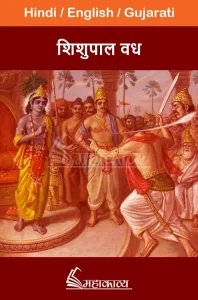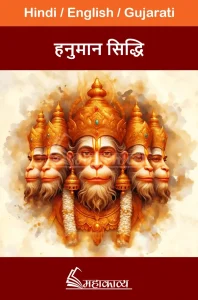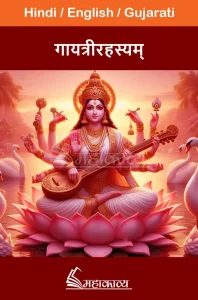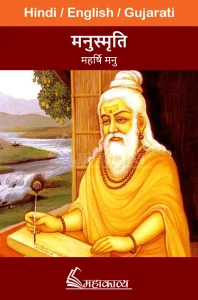Read Shrimad Bhagwat Geeta in English
One of the holiest scriptures of Hinduism is Shrimad Bhagavad Gita. The teachings of the Shrimad Bhagavad Gita were given by Lord Krishna to Arjuna before the war of Mahabharata started. Shrimad Bhagavad Gita is given as a composite Upanishad of Bhishma Parva of Mahabharata. It has 18 chapters and 700 verses. The knowledge of Bhagavad Gita was given about 5560 years ago. The calculation of the Bhagavad Gita is included in the Upanishads and Brahmasutras, which in the tradition of Hinduism, the place of the Gita is the same as that of the Upanishads and the Dharmasutras. The Upanishads have been called cow and the Gita cow’s milk. The Bhagavad Gita accepts the spirituality of the Upanishads in the Sarvansa, and the teachings of the Upanishads are also in the Gita. Ashwattha Vidya, Avyayapurush Vidya, Aksharpurush Vidya, and Ksharpurush Vidya are in the Bhagavad Gita, which is the science of the Upanishads.
In fact, no one has the ability to describe the greatness of Shrimad Bhagavad Gita by voice, because it is a supremely mystical book. In this, the essence, essence-collection of the entire Vedas has been made. Its Sanskrit is so beautiful and simple that a person can understand it easily with a little practice, but its purpose is so serious that even after practicing it regularly for life, it does not come to an end. New expressions keep arising every day, and due to this it always remains new, and by concentrating and contemplating with reverence, and devotion, the supreme secret filled in its footsteps becomes known directly. It is difficult to find in other texts the way the qualities, effects, and significance of God have been described in this Gita Shastra; Because especially in the texts, some worldly subject is found. God has said such a wonderful scripture in the form of ‘Srimad Bhagavad Gita’ that in which not a single word is empty of good words. After describing Gita ji in Mahabharata, Shri Veda Vyas said-
गीता सुगीता कर्तव्या किमन्यैः शास्त्रविस्तरैः।
या स्वयं पद्मनाभस्य मुखपद्याद्विनिःसृता।
Gita sugita kartika kimanyaih shastravistraih.
Or Padmanabhasya Mukhapadyadvinishrita himself.
‘Gita Sugita is worth doing, that is, it is the main duty to imbibe Sri Gita Ji thoroughly with meaning and emotion, which is itself emanating from the mouth of Padmanabha Lord Shri Vishnu. Then what is the purpose of expanding other scriptures?’ Sri Bhagavan, Himself has also described its greatness (Chapter 18 Shlok 68 to 71).
Find solutions to your problems from the Bhagavad Gita
Table of Contents
Toggleintroduction:-
Shrimad Bhagavad Gita is the holy book of the Hindu religion, which is the message of Gita which is narrated by Lord Shri Krishna to Arjuna before the war of Mahabharata started. In the Bhagwat Geeta, 18 chapters and 700 verses describe the essence of the entire Vedas. Apart from Arjuna, Sanjaya heard Shrimad Bhagavad Gita and Sanjaya narrated it to Dhritarashtra. In the Gita, 574 verses have been uttered by Shri Krishna, 85 verses have been uttered by Arjuna, 40 verses have been uttered by Sanjay, and 1 verse has been uttered by Dhritarashtra. The war of Mahabharata is the backbone of the Gita. In the Bhagavad Gita, Karma Yoga, Gyan Yoga, and Bhakti Yoga have been discussed by Lord Krishna in simple language.
Gita Message Summary:-
The knowledge of Shrimad Bhagavad Gita was first narrated by the Lord to the Sun God, the symbol of knowledge. To say God means that I have given the knowledge of Gita even before the birth of the earth. The Bhagavad Gita contains the essence of all life. In the heart of man, curiosity always revolves around who am I. What is this body? Do I have a beginning and an end with this body? Will I continue to exist after the body leaves? Where and in what form will this presence take place? What is my reason for coming into this world? What will happen after I leave this body, where will I have to go? By thinking the same thing, we do not know about ourselves. Lord Shri Krishna has given the answers to all these questions easily on the basis of religious dialogue in Gita. Due to the presence of the soul in this body, 36 elements work together, where is the place of the soul, and in which place the soul resides, the soul is the master of the body, but there is also a third person, when the third person appears. It destroys this body of 36 elements and also the soul. The ultimate state and the ultimate truth is the best person. The soul departs after renouncing a body, this movement has been described in the Bhagavad Gita. After the death of the body, the soul is subject to karma, so the soul keeps on moving in different types according to the actions.
Summary of Bhagavad Gita, O intellect should be kept closely attached to the soul. It is said to continue doing karma in a simple way. Lord Shri Krishna has repeatedly said in the Gita that the soul should be stable. It is easy for the intellect to be absolute while performing natural actions, so it is considered to be a definite path. That is why Jnana Yoga, Buddhi Yoga, Karma Yoga, Bhakti Yoga, etc. have been preached in the Bhagavad Gita. If we consider this, then all yogas offer their intellects to Lord Krishna. Because of this, non-attachment yoga becomes self-evident, self-fulfilling action yoga.
Geeta Jayanti:-
Shrimad Bhagavad Gita Only thirty years before the beginning of Kali Yuga, on the day of Margashirsha Shukla Ekadashi, Lord Krishna gave the message of Gita to Arjuna by sitting on Arjuna’s chariot named Nandighosh in the place of charioteer, on the day of Margashirsha Shukla Ekadashi. The festival of Gita Jayanti is celebrated every year on this date. It is believed that the first day’s sermon took place between 8 and 9 in the morning.
Read here in one click ~ Shrimad Bhagavad Gita in Hindi
Other names of Gita:-
Ashtavakra Gita
Dnyaneshwari Gita
Avadhoot Geeta
Kapil Geeta
Shriram Geeta
Shruti Geeta
Uddhav Gita
Vaishnav Gita
Krishi Gita
Guru Geeta
read this also
Please wait while flipbook is loading. For more related info, FAQs and issues please refer to DearFlip WordPress Flipbook Plugin Help documentation.






 Download the Mahakavya App
Download the Mahakavya App